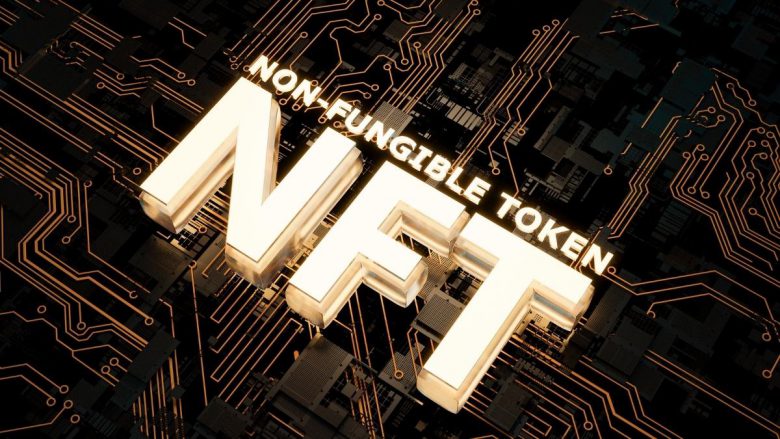
NFTs are more than just a passing fad in the arts; they represent a mind-boggling technology that is both simple and revolutionary. Non-fungible Tokens (NFTs) were first introduced in 2017 with the release of Cryptokitties, an Ethereum blockchain-based game that allows for the creation, adoption, and trading of digital arts.
NFTs are based on the blockchain technology that underpins cryptocurrencies like Ethereum. On the Ethereum network, many NFTs are created and stored. NFTs are supported by other blockchains.
What Distinguishes NFTs from Cryptos?
NFTs may use blockchain technology, but they are not a currency. Furthermore, most NFT marketplaces require you to purchase NFT art with a cryptocurrency. NFTs and cryptocurrencies are fundamentally different in that they are created and used for different purposes.
Unlike NFTs, cryptocurrencies are valued storage mediums that can be used to buy and sell goods. As a result, they are fungible tokens like other fiat currencies like the dollar or pound. NFTs, on the other hand, only generate one-of-a-kind tokens to demonstrate and convey ownership rights over digital art.
Despite minor differences from cryptocurrencies, the NFT community has grown in lockstep with the Bitcoin and Ethereum communities. Because of their ability to digitize anything, NFTs, like most cryptos, are changing the way we transmit data and connect.
You must not only be able to digitalize your assets using NFTs, but you must also be able to transact transparently with anyone, anywhere. Here’s a quick look at how NFTs are changing the crypto world.
1. They have resulted in increased decentralization
The vast majority of the crypto world is decentralized, which means that more people can earn directly from their work without the involvement of a middleman. NFTs have proven to be a critical anchor by serving as a digital ledger for proving ownership, tracking transactions, and eliminating the middleman.
This has the potential to change the crypto world for the better and allow people to earn more money for their efforts. Furthermore, by allowing transactions to take place directly between two parties without the use of an intermediary, NFTs have significantly reduced buffer time, paving the way for only transparent agreements.
Furthermore, because NFTs are decentralized, you do not need permission from a specific authority to post or sell anything.
2. NFTs Have Added a ‘Proof of Ownership’ Element to Cryptocurrencies
NFT’s proof of ownership has evolved into one of the most straightforward methods of verification. You can use Non-Fungible Tokens to prove what you own, how you got it, and when you got it. Everything is stored on a personal wallet address and is permanently recorded on the blockchain.
The enhanced ease of verification and proof of ownership in NFTs applies to a variety of assets. It can be used to create something as simple as a GIF or something as complex as business contracts. This makes transacting in the crypto world simpler than previously thought.
3. Enhanced Access
NFTs give creators and consumers access to the crypto world that we’ve all desired. Non-fungible tokens and blockchain technology allow you to transact 24 hours a day, 365 days a year. Furthermore, the ability of Blockchain to allow continuous transactions means that NFT creators and consumers have constant direct interaction at all hours of the day and night.
They can sell or buy anything to/from anyone, anywhere, and at any time. This creates a more personalized overall experience, whether selling smart contracts or simple digital art.
4. You can now earn money from royalties
NFTs have transformed how we earn money from cryptos by introducing a new revenue stream: royalties. As a creator, NFT allows you to earn royalties from secondary sales of any of your original work. Furthermore, you can now include a royalty percentage on your position and continue to profit from it for days and years after the initial sale.
The royalty aspect protects creators who do not receive the anticipated benefits from the initial NFT sale. Some artwork, for example, may not command a reasonable price today but will quickly sell for millions of dollars in a few years. NFTs step in to help you get what you deserve, even if time has passed and the asset is now owned by someone else.
With NFT’s royalty percentage factored in, you’ll not only be able to earn money from your original work, but the collector will also be able to sell the work for a profit. This results in a win-win situation that makes investing in NFTs and cryptos worthwhile.
Takeaway
There’s more to consider when it comes to disruptive technologies like non-fungible tokens and how they’re transforming the entire crypto world. The elements highlighted above are just a few examples of how NFTs are changing the current crypto world. However, with technological advancements on the horizon, NFTs may soon find a new path to thrive and provide the value we can hope for.
Learn more from NFTs and read Before you start minting your first NFT, make sure you know these things.


